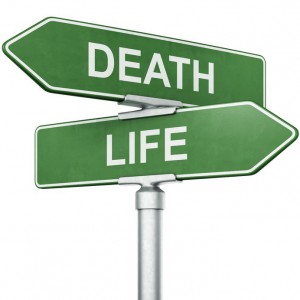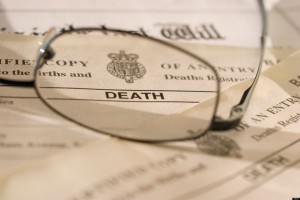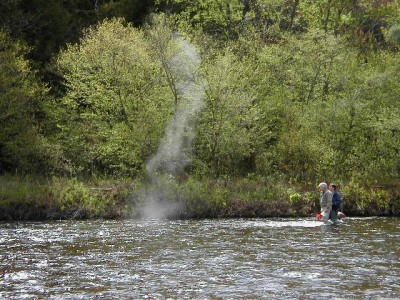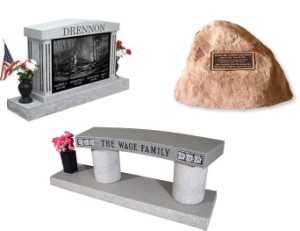
What happens when we die? This common question may be one you’ve thought about before. You may have religious views. You may believe nothing happens. However, science has shed new light on what actually does happen in those minutes – sometimes hours – after a person dies.
In a recently released study, researchers found that the human brain is completely aware of what happens at the time of death. In fact, the brain remains alive and functioning for minutes or even hours after a person dies. That’s shocking to most. And, it is also terrifying. What does this mean?
Take a Closer Look at the Study

The study, conducted by Stony Brook University in New York looked at 2,000 people who reported having near death experiences – these are instances in which the person was technically dead and then were resuscitated. Each one tells of a different story, but all convey one clear message. They all are fully aware of what is happening around them. Many recognize that they are dead. Others see a light or have an out of body experience.
 What researchers have learned is that when a person dies, the brain can remain functional for minutes to hours after the death. Medically, a person is considered dead when the heart stops beating. When this occurs, there is no more flow of oxygen-rich blood to the organs. The organs slowly stop working. This includes the brain. Yet, the instant the heart stops does not translate into the instant the brain stops. The residual amounts of oxygen in the blood system, which remains present for some time, can keep the brain functional. It takes time for the brain’s lack of oxygen to finally cease its ability to function.
What researchers have learned is that when a person dies, the brain can remain functional for minutes to hours after the death. Medically, a person is considered dead when the heart stops beating. When this occurs, there is no more flow of oxygen-rich blood to the organs. The organs slowly stop working. This includes the brain. Yet, the instant the heart stops does not translate into the instant the brain stops. The residual amounts of oxygen in the blood system, which remains present for some time, can keep the brain functional. It takes time for the brain’s lack of oxygen to finally cease its ability to function.
During that time – from the moment the heart stops until a person’s brain stops function – the person’s awareness may still be fully in place. The person who may be technically dead from a lack of a heart beat may still understand what is happening around them.
An Explanation for Near Death Experiences
 Many people report having some type of experience after their heart stops. These individuals, who have been brought back through medical intervention, report a wide range of occurrence. In some situations, they report a bright light. Others report being transformed into a ball of energy and floating over themselves. They clearly see the people around them. Many report hearing and understanding the conversations that doctors have around them.
Many people report having some type of experience after their heart stops. These individuals, who have been brought back through medical intervention, report a wide range of occurrence. In some situations, they report a bright light. Others report being transformed into a ball of energy and floating over themselves. They clearly see the people around them. Many report hearing and understanding the conversations that doctors have around them.
Many near death experiences provide very detailed information about what happens around the person when he or she dies. For example, some people report seeing specific doctors or hearing specific voices. Some people have had this information verified – information they would not have known had they not been about to communicate it in this manner. What makes this interesting is that many men and women with near death experiences often attribute what they feel to an experience they have never had before.
Could this be the feeling of oxygen slowly leaving their brain?
Imagine for a moment what could actually be happening according to the New York University. A person’s heart stops. In that moment of death, blood is still traveling to the brain. The brain continues to work. It continues to allow an individual to know and recognize what is happening around them. They cannot speak or move, but the brain still tries to function as it has. The oxygen present allows the brain to work, but it is not the steady flow of oxygen the brain needs to work properly. This creates a different perception of reality around them. And, what the brain is telling the person that is happening – the out of body experiences – seem very lifelike and real. That’s because they are. The brain is communicating this in some manner.
The Medical Component of the Research
 What the researchers found, scientifically, is that the brain continues to fire off signals. The neurons are still operating at the time of the heart stopping. They do not immediately stop working. Rather, the neurons begin to fail over a few minutes or longer as oxygen depletion leads to their destruction.
What the researchers found, scientifically, is that the brain continues to fire off signals. The neurons are still operating at the time of the heart stopping. They do not immediately stop working. Rather, the neurons begin to fail over a few minutes or longer as oxygen depletion leads to their destruction.
The heart’s job in life is to pump blood that is full of oxygen to the brain and other organs. Imagine, for a moment, how it works to feed other organs. For example, oxygen is necessary for the digestive system to work. It is necessary for the kidneys to work. Yet, when the heart stops, do those organs simply stop functioning immediately? What many people think of as death – a sudden process where the entire process shuts down – is not accurate. The process of death takes longer, even when a person cannot talk and communicate a message.
Why Some Have the Experience And Others Do Not
Questions remain in understanding what occurs after death. For example, studies indicate that only 60 percent of the people have died – had their heart stop – and were brought back to life have no after death experience. They do not remember anything happening. They do not have any type of bright light to follow. Research is still out on why this happens to so many, but it could be attributed to a faster rate at which the brain dies. In some cases, the brain can die faster due to the lack of oxygen in the blood stream leading up to the death.
What This Means to You and Your Loved Ones
Researchers are continuing to look at the body of evidence brought forward by these near death experiences. All are very vast and wide ranging. And, as medical science improves to allow people to be resuscitated further from that moment of death, it may be possible to better understand what truly happens. Yet, for those living today, this could signal a time to carefully reflect on wishes and needs.
No matter what you believe happens after your death, religious or not, one thing is for sure. While you are alive, you have the ability to live a full life. Many of the men and women who have had these types of experiences feel profoundly different after they have been brought back. Many feel empowered to help others. Still, others embrace their religion more fully.

As science continues to work to understand why this is, it may be important to reflect on your own wishes and needs. If you have not created a will or put an estate plan in place, now would be a good time to do so. You can also find a variety of tools available to help you to plan each detail of your end of life wishes. You can also purchase cremation urns, if you like, in advance.
For those planning their loved one’s final resting place or purchasing cremation jewelry to honor their loved one, take a moment to reflect on what this new study could mean for them. Could it mean your loved one remains aware of your presence after his or her death? Could it help you to believe there is an afterlife?
Researchers say they will continue to work to uncover more insight into what happens after death. As they do, we can count on many men and women sharing their stories of near death experiences and what they could mean for our future, too.




